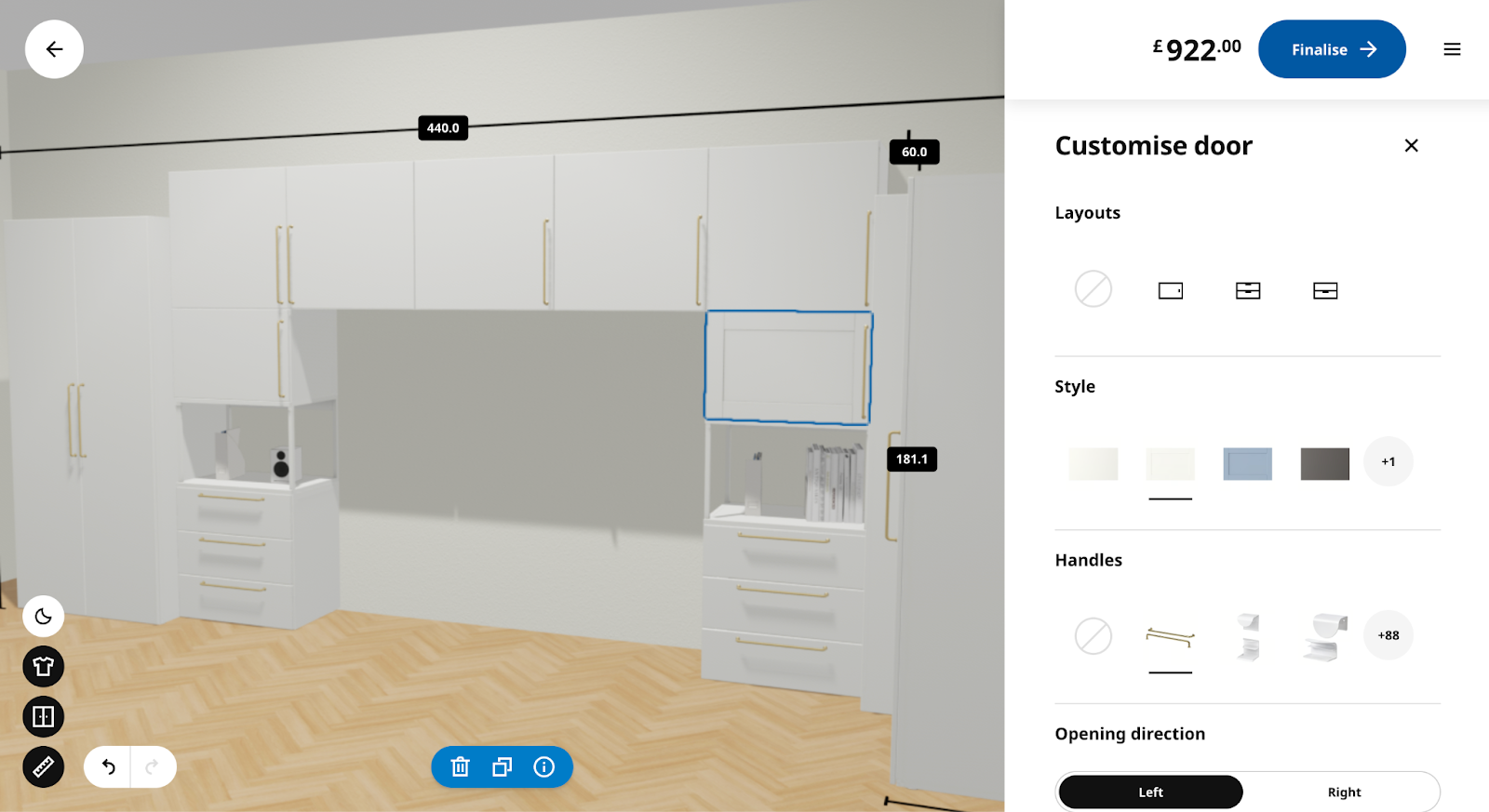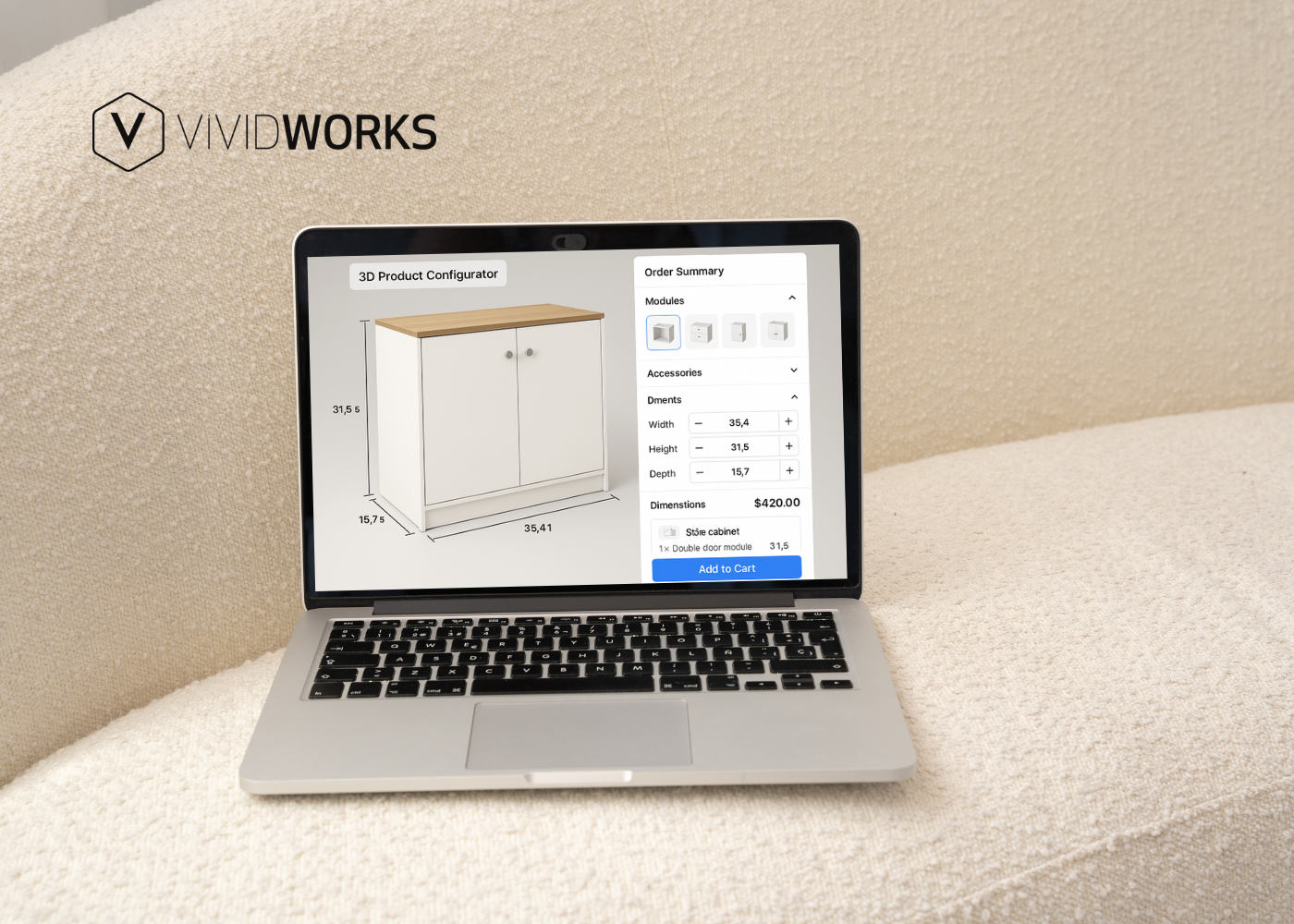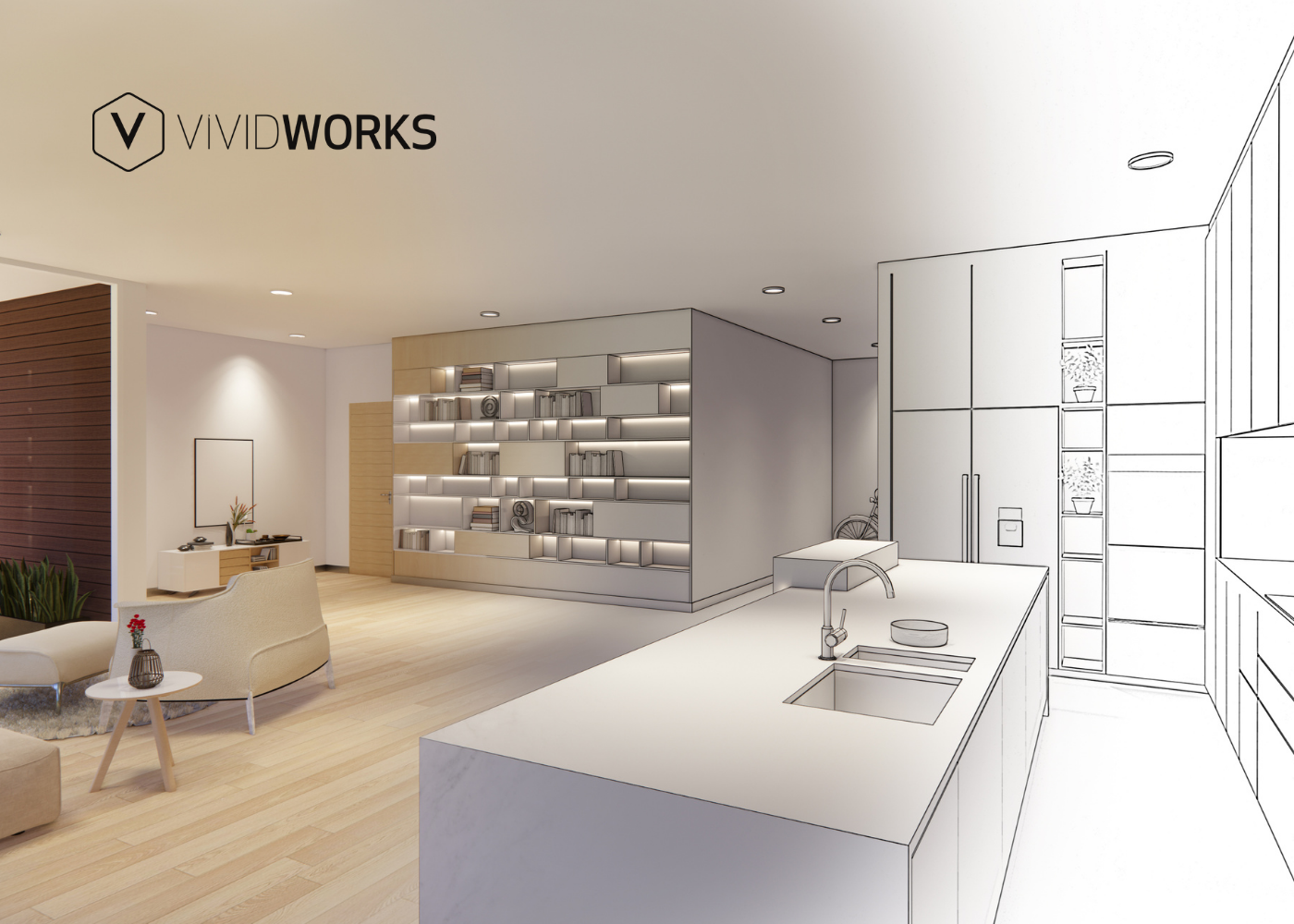The global custom furniture market is growing significantly, with a projected value of approximately $65.67 billion by 2032. This has driven a clear shift in buyer behaviour: They want to crave personalization and unique pieces that might reflect their individuality. Even the established businesses like IKEA look at this aspect to stay ahead in the market.
So, how can furniture brands start with this? It’s time to embrace powerful technologies that transform the way products are designed, presented, and sold to our customers. Welcome to the future of custom design, where 3D product customization is crucial. Customers have not only seen and bought a product, but they also join as true designers.
This article will define 3D customization and its role in maximizing sales performance. You can also get inspired by the top brands on how to adopt 3D furniture customization software and consider key challenges that you might confront for the best preparation.
Right now, let’s get started!
What is 3D Product Customization?
3D product customization is a 3D technology that enables users to design and modify their own product designs in 3D views. Specifically, this means customers can customize its attributes, like fabrics, modules, colors, sizes, dimensions, finishings, or add-ons, and combine different modules, accessories, and parts to have a design that they desire. These steps are completely performed by a few clicks or taps, with an intuitive interface.
Unlike static 2D visuals, 3D furniture designs are highly rated for delivering an immersive shopping experience. Shoppers can rotate the item, see it from every angle, and instantly clarify how their choices affect the finalized look without any support from salespeople.
Why Furniture Brands and Shoppers Need 3D Customization
#1. The rise of the made-to-order furniture
The “one-size-fits-all” approach might be obsolete, not only for the furniture industry. Many people look for products that they feel are personalized, unique, and interesting. And they are willing to pay more for a product design that is perfectly tailored for their space decor, such as in a home or office, rather than settling for something off-the-shelf. That’s why made-to-order, bespoke furniture has recently become a sales phenomenon.
With 3D product customization tools like furniture configurators, brands successfully scale made-to-order production efficiently. Customers control and tailor every element, custom configurations are updated in real time, and accurate final designs are delivered.
#2. Immersive, personalized experiences
Besides enabling the ability to reconfigure a product design in 360 degrees for a deeper evaluation, 3D furniture design software is tailored to show complex, highly modular pieces immersively, all of which are powered with Augmented Reality (AR) technology. Once customers finish the desired design, they can bring it to life with the AR app and their mobile devices and then test whether it truly pairs well with their real environment.
Furthermore, most 3D configurators come with real-time 3D furniture visualizations and prices, ensuring customers know how design choices impact the final cost and quote. This level of transparency helps shoppers make informed decisions and build their trust.
In the furniture industry, 3D customization also involves planning a fully featured 3D room to prepare a customer’s desired home, building, or office. They can select wall colors, flooring, lighting, and complementary decor items to create a cohesive interior design. This is considered a 3D room planner, where all users work with accurate 3D renderings.
#3. Influence of 3D and AR shopping from furniture giants
Some giants like IKEA or Wayfair also contribute to the industry's future by leading technologies like 3D product customization, 3D furniture modeling, AR, VR, and the “View in Room 3D” feature. Therefore, startups or SMBs are more likely to learn from these pioneers and adopt a scalable but friendly budget solution to stay competitive. Generally, you should not heavily rely on one technology; be flexible for the best results.
#4. Transforming the Operational Process
In fact, custom experiences are not just for interactive furniture designs; they significantly impact business performance, from design and sales to manufacturing and fulfillment. Below are some of the highlights that your internal departments can take advantage of:
- Salespeople
Furniture customization software lets customers create their own designs without errors, reducing the burden on sales teams from constant support for refining and confirmation. Even your team can offer remote consultations, where a salesperson can guide a buyer through a virtual session for a first-time experience, making the process more effective.
- Designer
Traditional processes involve a lengthy and costly cycle of creating physical prototypes. Thanks to 3D product customization tools, designers give customers design control, allowing them to interact, personalize, and visualize furniture from all angles in real time. While customers feel more engaged as co-creators, designers can save time and effort.
- Manufacturing team
Integrating furniture configurators into your back-end ecosystem, like eCommerce platforms, CRMs, and ERPs, can streamline the entire production and fulfillment process. These 3D configurators automatically generate Bill of Materials (BOMs) and assembly instructions for each order, minimizing manual data input and the risk of human mistakes. Moreover, the team can better manage stock levels and forecast demand more precisely.
Real-World Examples of Furniture Configurators for Design
#1. Supra Cabinets
The first example of utilizing 3D product customization technology is Supra Cabinets, a Sweden-based B2C company that sells mental storage solutions. The company used to find challenges in optimizing customer experiences for its custom Supra Cabinet series. Initially, the designers only relied on Photoshop and 2D images to deliver configuration, making it ineffective for customers to understand how the cabinets would look in reality. As a result, customers feel confused about closing deals, driving high abandonment cart.
Now, with the VividWorks 3D Garage Storage Configurator, “the customers do all this work by themselves directly on our page, and can see their configuration develop right on their screen in real-time.” - Zebastian, the Founder of Supra Cabinet. Moreover, customers can freely choose and match materials, sizes, inspirations, and modules without mistakes, making this tool powerful for modular furniture. Once the cabinet is finished, customers can even preview it in their actual garage using AR for full confidence in their decisions.
#2. IKEA
The " Design It Yourself " app of IKEA allows for customizing items for different spaces, such as living rooms, kitchens, baths, and more. With each selection of layouts, styles, and colors, IKEA provides an accurate, real-time visualization of the respective details. Customers can also get immersive 360-degree room visualization with their desired design inside, which is crucial to sincerely evaluating the mix-and-match level in reality.

IKEA enables the Design It Yourself feature for 3D product customization
#3. Lundia
This furniture brand fully takes advantage of Visual CPQ, another innovative 3D product customization technology delivered by VividWorks, to revolutionize the design and sales process for its complex shelving systems. You can customize your own shelf with exact measurements, instantly visualize it from all angles, and get the price at the same time. This minimizes unexpected costs, ensuring shoppers have a better shopping experience.
Moreover, customers can virtually experiment with different design elements and room configurations using the 3D planning program. By adjusting wall colors, materials, and other interior details, everyone can visualize custom shelves in a fully furnished room.
#4. Grand + Benedicts
Grand + Benedicts is a strong B2B furniture example of successfully adopting a great 3D configuration platform for product customization to sell Gondola shelving systems. These product designs are highly valued for building organized displays and offering unparalleled flexibility. However, visualizing a range of shelving options used to be quite challenging, resulting in back-and-forth communication between sellers and shoppers.
With a 3D shelving configurator, Grand + Benedicts allows retailers to design products in detail. They can freely customize size, color, finish, back panels, shelves, and add-ons. And real-time 3D visuals and prices give customers a clear view of their finished units.
3 Challenges of Adopting Furniture Customization Software
Before starting to invest in 3D furniture design solutions for product customization, below are the challenges that brands and merchants should look for in the best preparation.:
- Cost consideration
With powerful tools like 3D furniture configurators, there are essential costs involved such as app development, testing, and ongoing subscriptions that help ensure the best results. Therefore, you need to budget carefully to ensure a return on investment (ROI).
- Technical integration
You need to ensure that customization tools sync effectively with eCommerce platforms, CRM systems, ERPs, and other inventory management software without any mistakes. This minimizes delays, errors, or inconsistent data for a smoother operational workflow.
- Performance quality and maintenance
3D furniture configuration tools with poorly optimized performance can lead to slow load times, glitches, or compatibility issues. While budgeting is essential, prioritizing high-quality, stable results is equally important, as it ensures a seamless user experience. Continuous updates and maintenance also need expert knowledge for consistent quality.
With these challenges, it’s essential to partner with an experienced provider. VividWorks, one of the top 3D configuration platforms, can offer proven tools for complex, highly modular designs, such as shelves, tables, sofas, storage solutions, kitchens, and more. Their furniture configurators also allow for seamless integration with your existing back-end system to transform your smooth operations and improved sales performance.
Book a demo today to see how VividWorks supports 3D product customization software for delivering engaging, interactive, and conversion-driven online shopping experiences.
Table of Content
-3.avif)
Streamline your process today!







